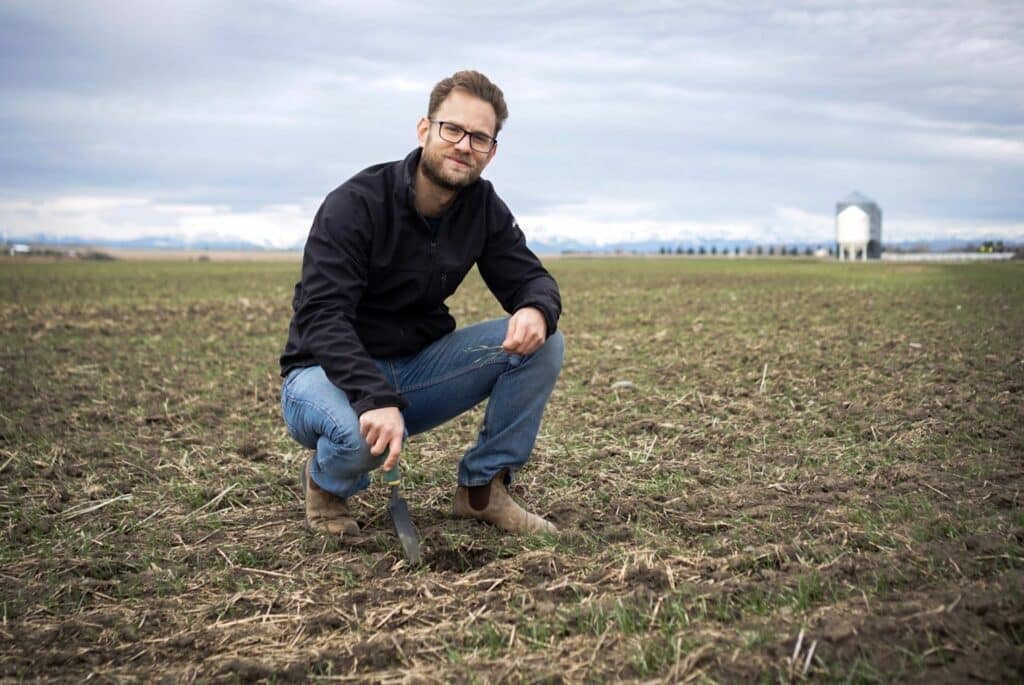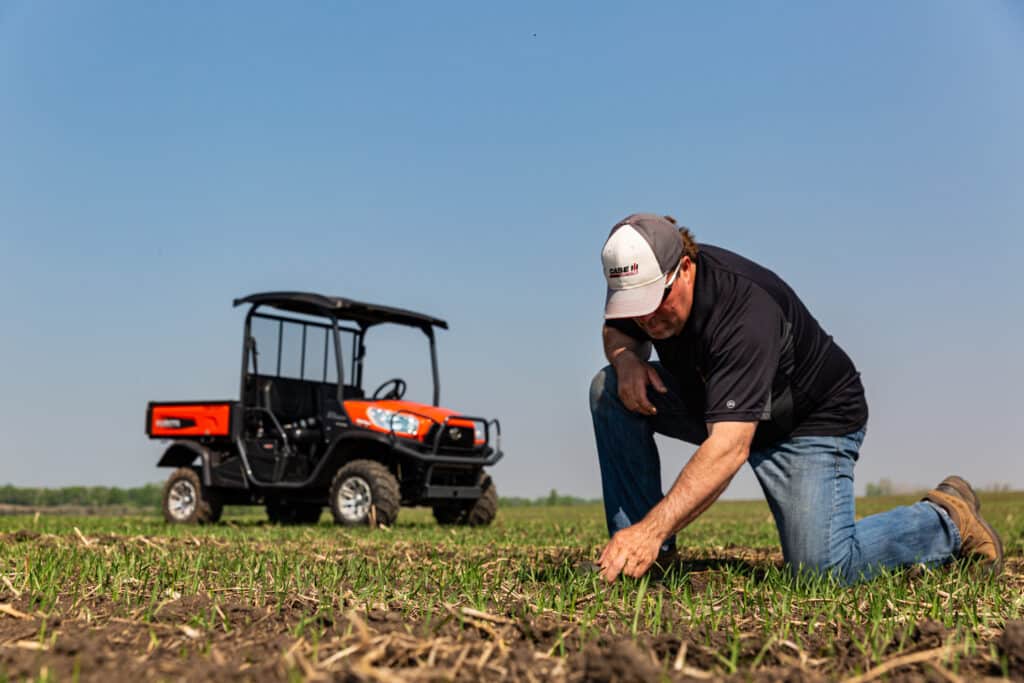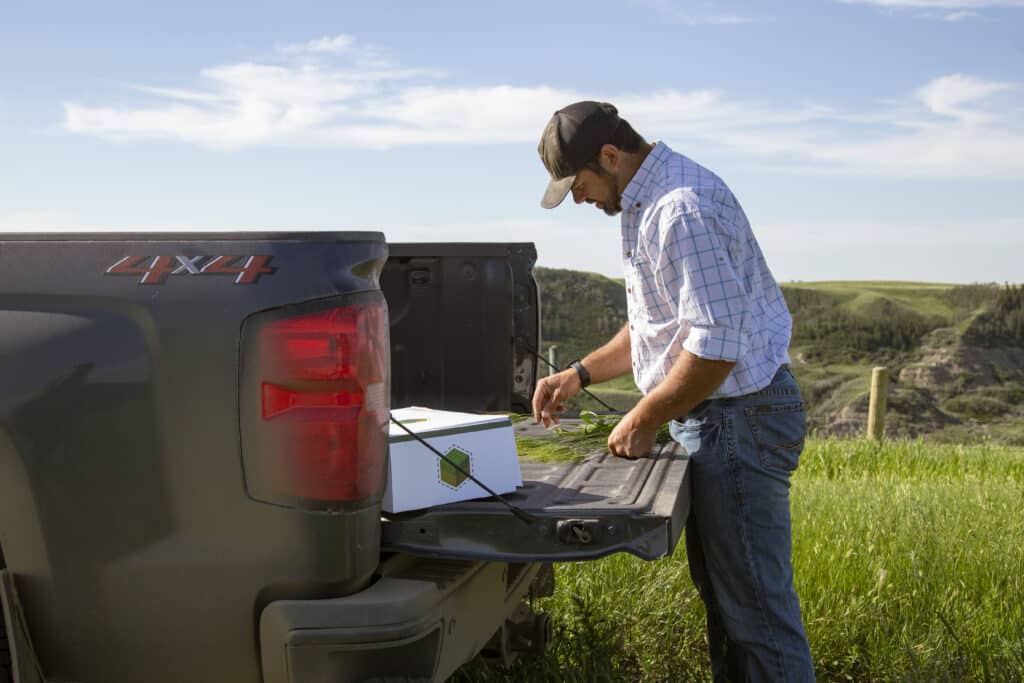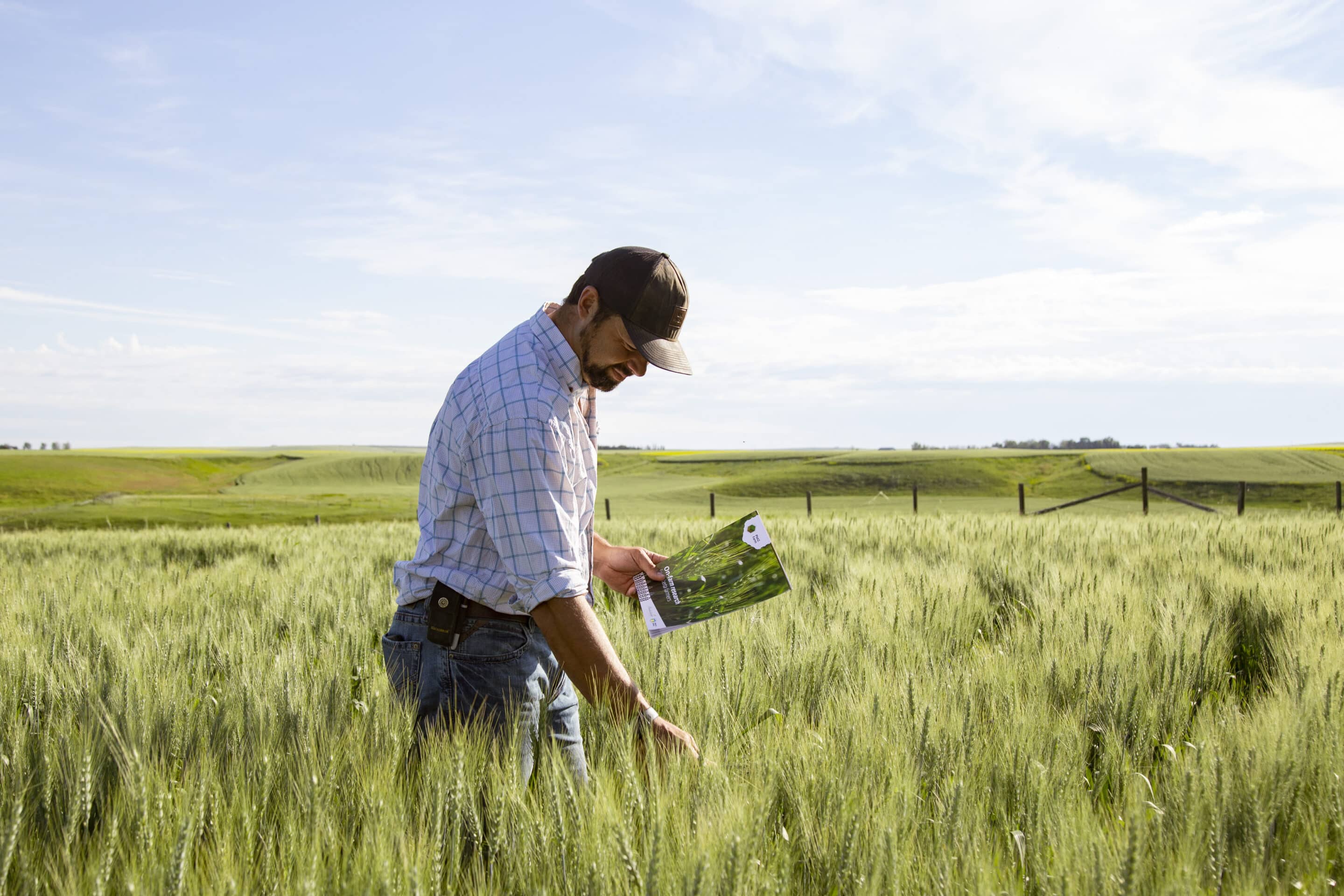Plot2Farm allows farmers to conduct field-scale trials for greater agronomic success.
Research plot trials are an integral part of the knowledge transfer that farmers rely upon to make sound agronomic decisions for their business. However, plot trials are noticeably small and often don’t reflect real world growing conditions. Nonetheless, it’s been what farmers have come to rely upon — until recently.
The Plot2Farm initiative by the Alberta Wheat and Barley Commissions gives farmers answers to the agronomic questions they have about how best to improve field practices through a better representation of how a given research trial will translate, or not, at a local farm. According to Jeremy Boychyn, agronomy and research extension manager at the Commissions, Plot2Farm is all about helping farmers with their questions, but also training them to replicate such trials on their own in the future.
“That farmer will carry that on through the years and if they are interested in doing a trial on their own, they now have that that knowledge and experience of implementing that,” he says. “We found that producers who have done these trials are always interested in doing more.”
How Plot2Farm Works
A farmer visits plot2farm.com and fills out an application form. They select from one of 13 different trial types between barley or wheat. If none of those are of interest, a farmer may apply for a customized trial. The applicant then inputs information about the field in question’s soil test results, equipment type, crop rotation and recent herbicide history. There’s even a section where they can draw field conditions to depict slope direction, sloughs, historical manure use, pipelines and more. Boychyn reviews the application and then sends out Plot2Farm packages to farmers. The box contains all pertinent materials, such as marker flags, grain bags and information sheets about how the trial will be conducted to ensure the best possible results.
In 2022, 11 farmers participated in Plot2Farm representing 12 trials. While certain trials are from the established list, some customized trials relating to nitrogen fixing bacteria and row spacing research were also done. Trials are conducted on spaces that range from a few acres to a half section. Often, the bigger the trial, the better.

Jeremy Boychyn is the agronomy and research extension manager at the Alberta Wheat and Barley Commissions who run the Plot2Farm program. Photo: Alberta Wheat/Barley Commissions
“It’s not that small-scale or plot-scale research isn’t valuable, it’s just understanding how that translation occurs,” says Boychyn. Do the seeding rate differences we see in small plot translate to large scale? How much of an effect does it have? What’s going to be the cost to the producer? Is the value there to pay for that extra seed to do those extra seeding rates? We’re just trying to really ground some of these results on a field scale. They’re similar in that they’re replicated and randomized. We are targeting to be as scientifically accurate as possible, but the scale and the equipment size are where we’re going see vast differences. We try to make them as big as possible.”
Best of all, once results are completed, which includes a lab analysis, they’re publicly posted to the Plot2Farm website where other farmers can read through the trial and understand what a fellow farmer went through and learned. All past results to date are available for download.
Plot2Farm Provides Ground Truth
Jason Lenz has seen the benefits of field scale research. In 2021, he conducted a plant growth regulator trial on malting barley at his Bentley, Alta., farm, northwest of Red Deer. However, he was hailed out in late July. In 2022, the weather co-operated, and he tested out a variety of nitrogen rates on another plot of malting barley with a check amount of 65 pounds per acre and three increasingly higher rates. He says his goal was to discover what the variety could handle.
“That’s part of Plot2Farm, to push the limits on some of these varieties,” says Lenz, Alberta Wheat Commissions’ vice-chair. “A well-designed program has that type of protocol in it. Rather than just doing a side-by-side rate, let’s push it really hard and see what the results are.”
The trial itself produced 35 acres of useable material and Lenz was able to have his results analyzed in short order. He says whether the data produces the results he’s hoping or not it’s all valuable in the end still — but he was happy to see results independently corroborate that he was on the right path with his practices.
“It confirmed our nutrient program that we run on our farm, as far as all the soil testing that we’re doing and the prescriptions that we’re doing for nitrogen, our check rate basically confirmed that we’re pretty much bang on,” he says. “Because that 65 pounds is what we would normally put on a barley crop, but the reason I did it was I was curious. Should we be pushing it more than 65 pounds with this variety? You know, maybe we can go to 80 pounds, for example, and gain 10 bushels.”

Jason Lenz tested a plot of malting barley with a check amount of 65 pounds and three increasingly higher rates at his Bentley, Alta., farm during the 2022 growing season, as part of the Plot2Farm program. Photo: Alberta Wheat/Barley Commissions
The trial that Lenz set up with the help of Boychyn and his assistant agronomist Dan Orchard was created to work within his machinery which is a 45-foot seed drill and a 35-foot combine header. The harvested replicate strips were about 35 feet by a half-mile long. Each strip Lenz harvested was 2.2 acres worth of barley.
The entire project was a fair amount of work and Lenz was glad to have help at various times. Lenz explained he felt supported throughout the entire duration of the trial.
The team helped him with plant emergence counts, final plant stand counts, driving the grain cart and recording all the weights and generally made sure his experiment would be a success.
“The program is set up to make it very easy for producers to have support in designing the plot and collecting the data,” he says.
Lenz encourages any Alberta farmer that wants to learn more about a field-scale trial on their land to investigate the program.
“It’s about trying new stuff, pushing different varieties with nitrogen testing, row spaces and seeding rates,” he says. “That data can be shared and help others, as well. I’m not going to do one every year, but certainly if I have something that I want to trial on my farm, the program makes it very easy. If you put some time and effort into it, you’re going to get more accurate, helpful information out of it.”
Plot2Farm continues on a recent policy shift in Alberta agricultural research to promote applied aspects. At Results Driven Agricultural Research (RDAR), the organization is glad Plot2Farm exists and believes it’s reflective of farmers’ needs for ground truth and results at a size and scale that will be of a real value. Factoring into account the local conditions of a farm’s soil, weather variation and other environmental factors are all logical aspects of such an applied program.

Plot2Farm is all about helping farmers with their questions, but also training them to replicate such trials on their own in the future. Photo: Alberta Wheat/Barley Commissions
“The trials are important to test what that practice change looks like at more of a field-scale level using producer machinery before going and adopting at a larger scale,” says Clinton Dobson, research director with RDAR. “It de-risks that investment of adopting new technology or addressing some of those adjustments that producers may be looking at, and just want to test before they do that.”
Dobson says the simplicity of Plot2Farm’s goal to answer straightforward questions is what will likely continue to increase participation.
“Farmers also trust other farmers,” he says. “The Plot2Farm initiative provides and a validated approach to guiding decisions in terms of plot design, statistics and to get grounded in economics of the scenarios. It’s exciting.”
For more information on the program visit plot2farm.com.
Header photo — In 2022, 11 farmers participated in Plot2Farm representing 12 trials. Photo: Alberta Wheat/Barley Commissions
Related Articles
Alberta Wheat, Barley Farmers Vote in Favour of Amalgamation





